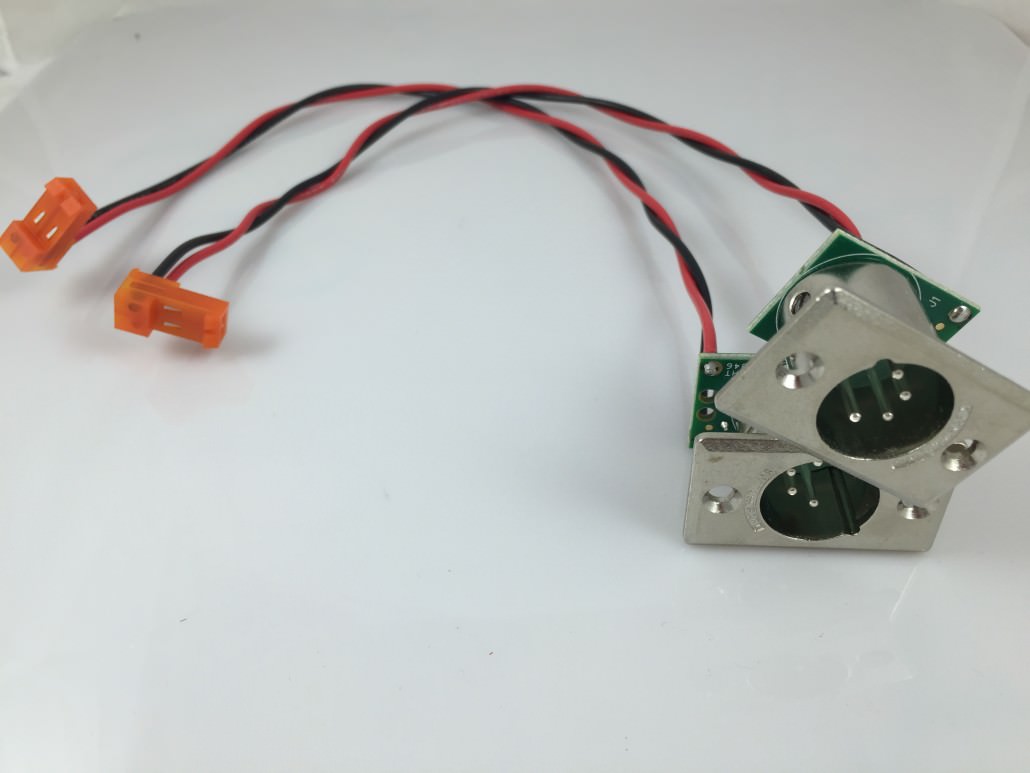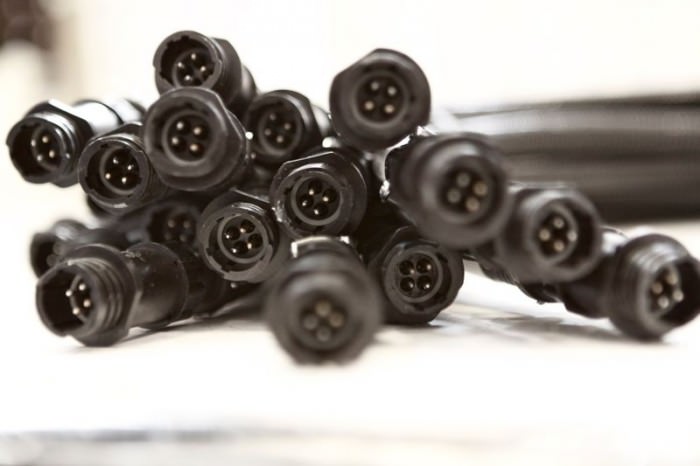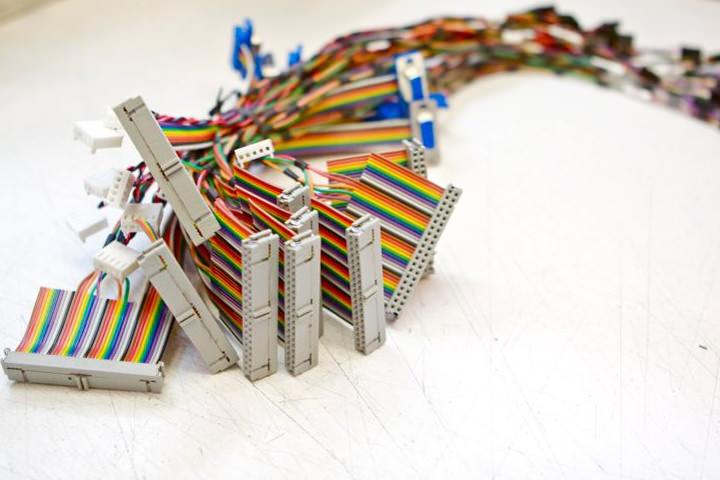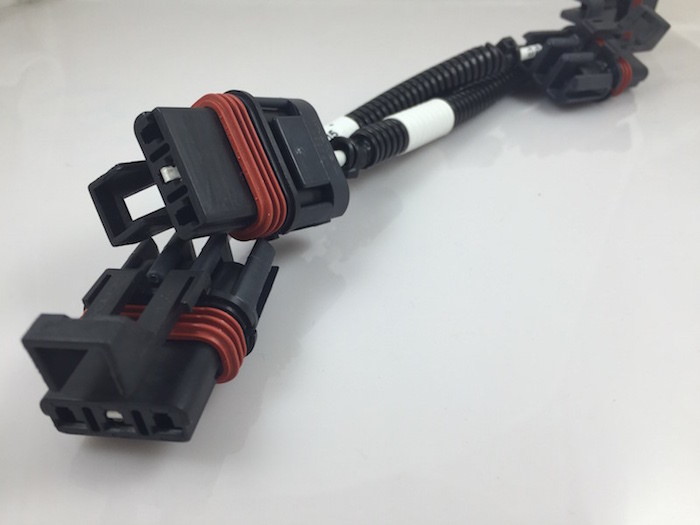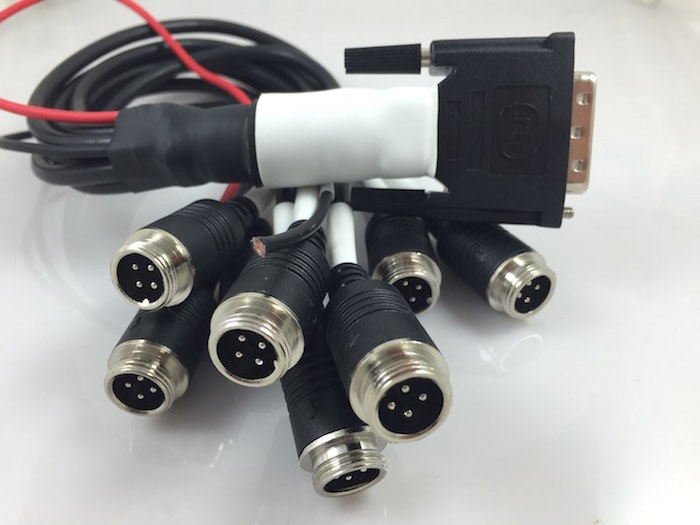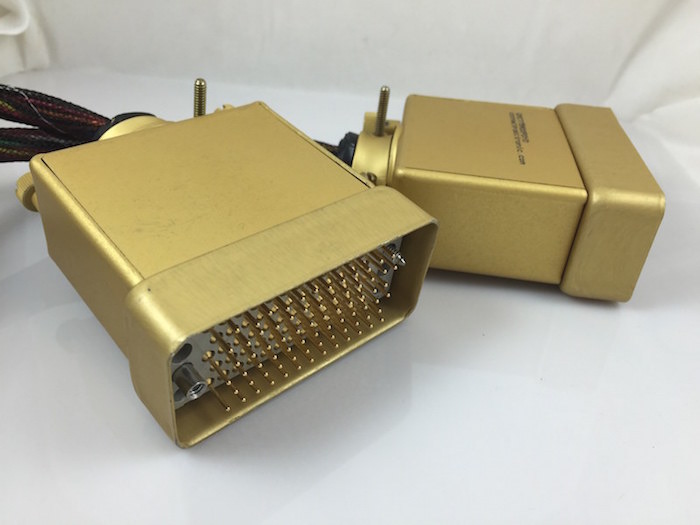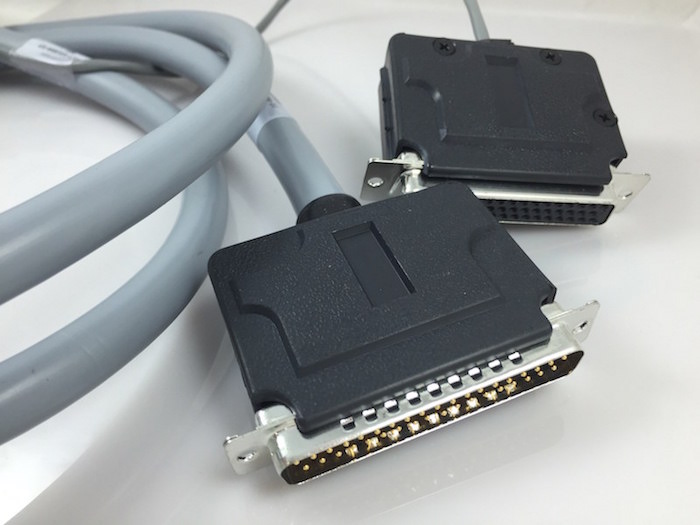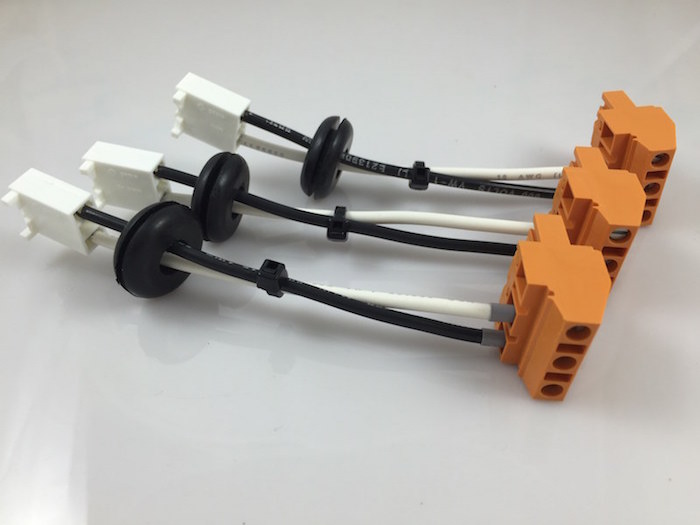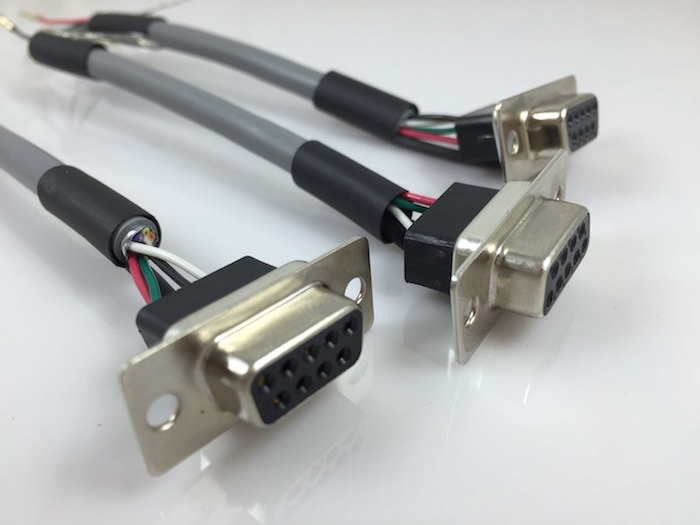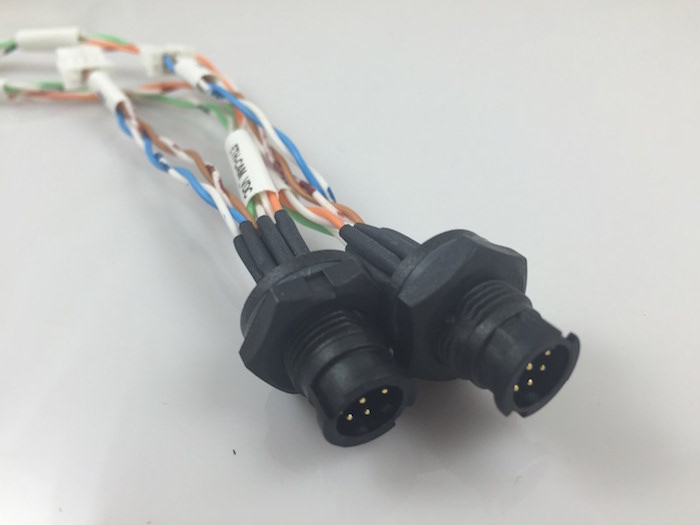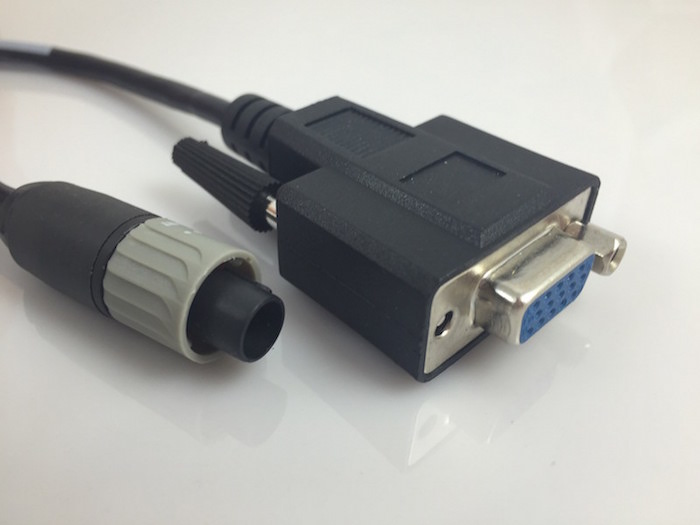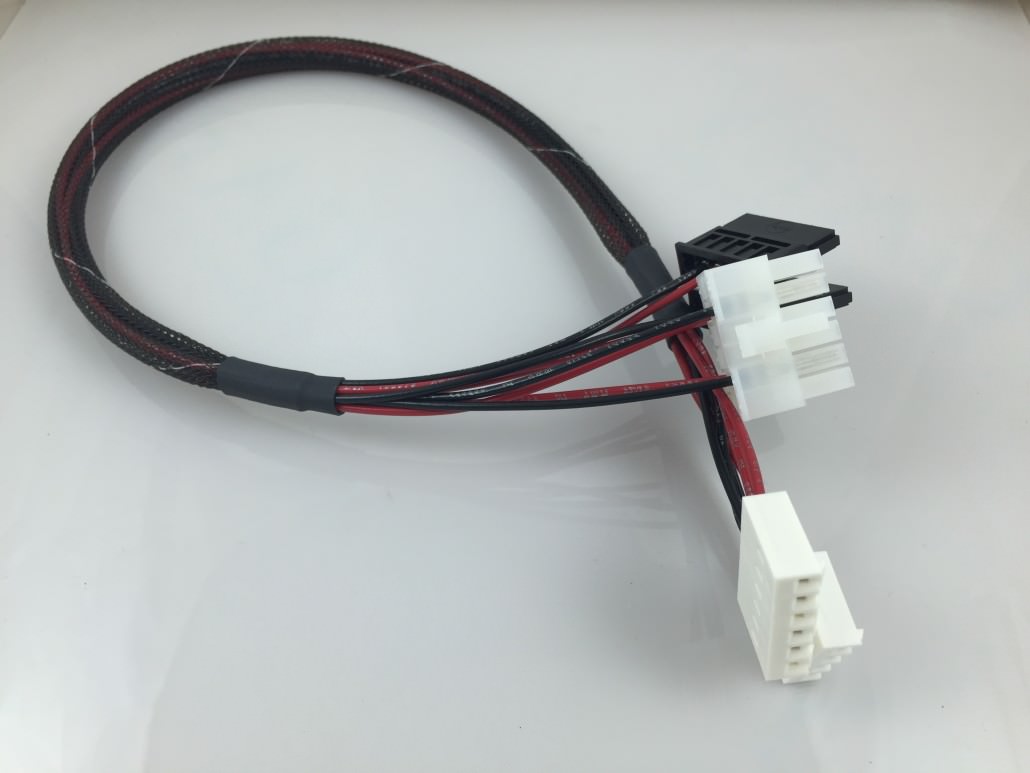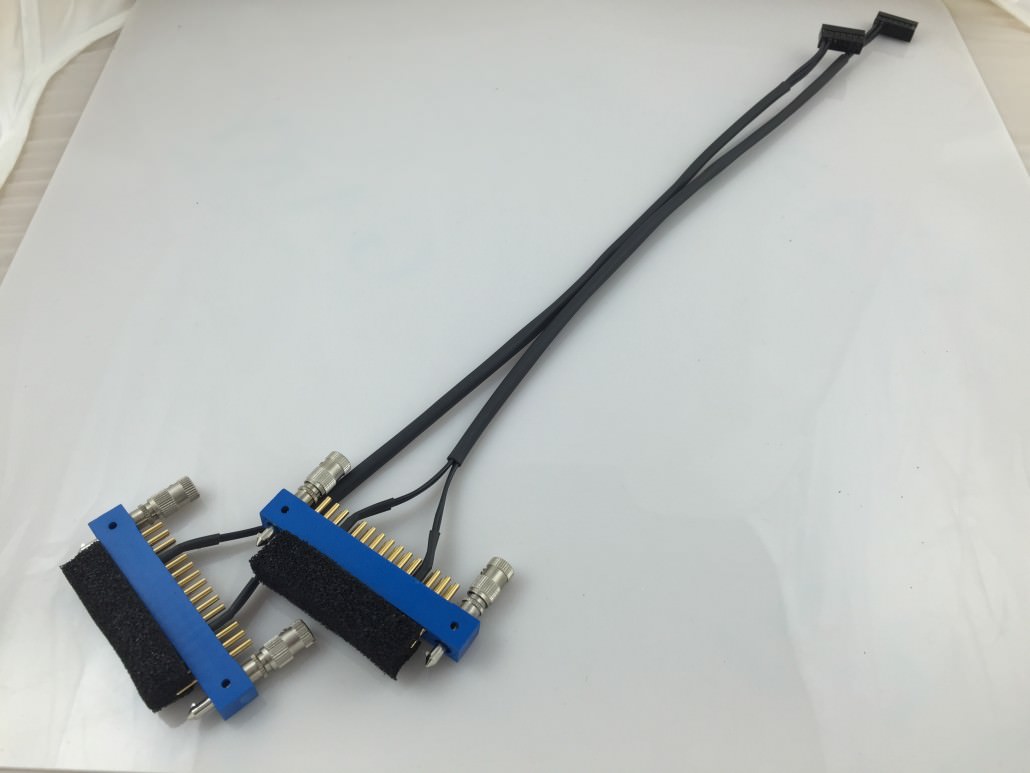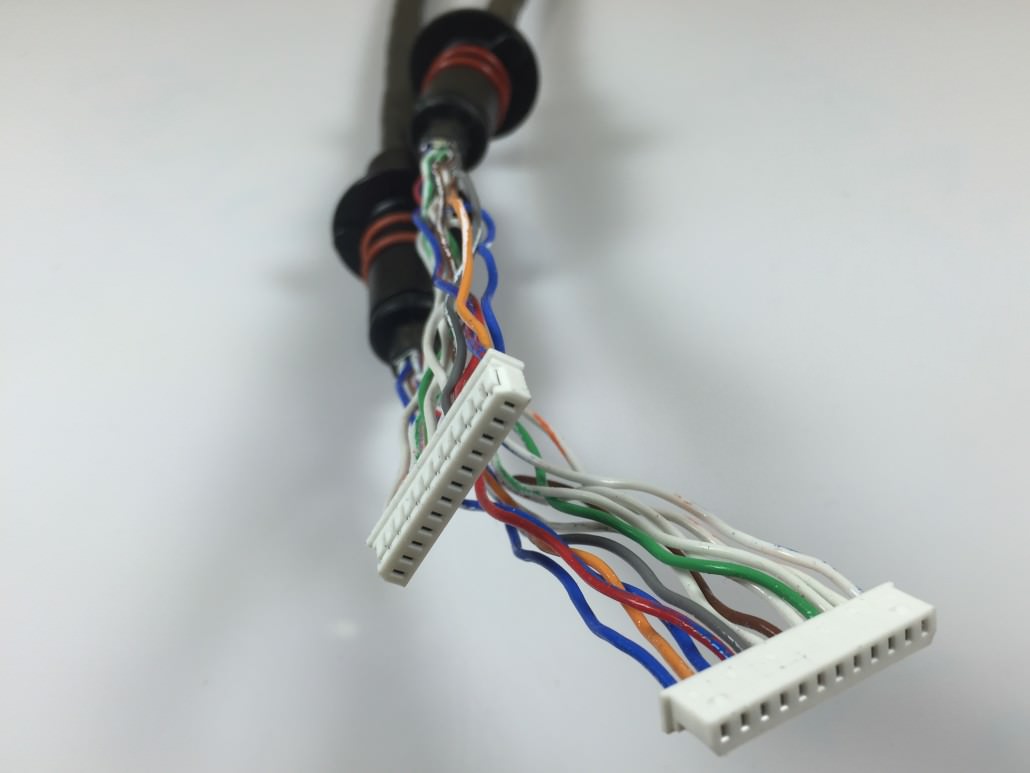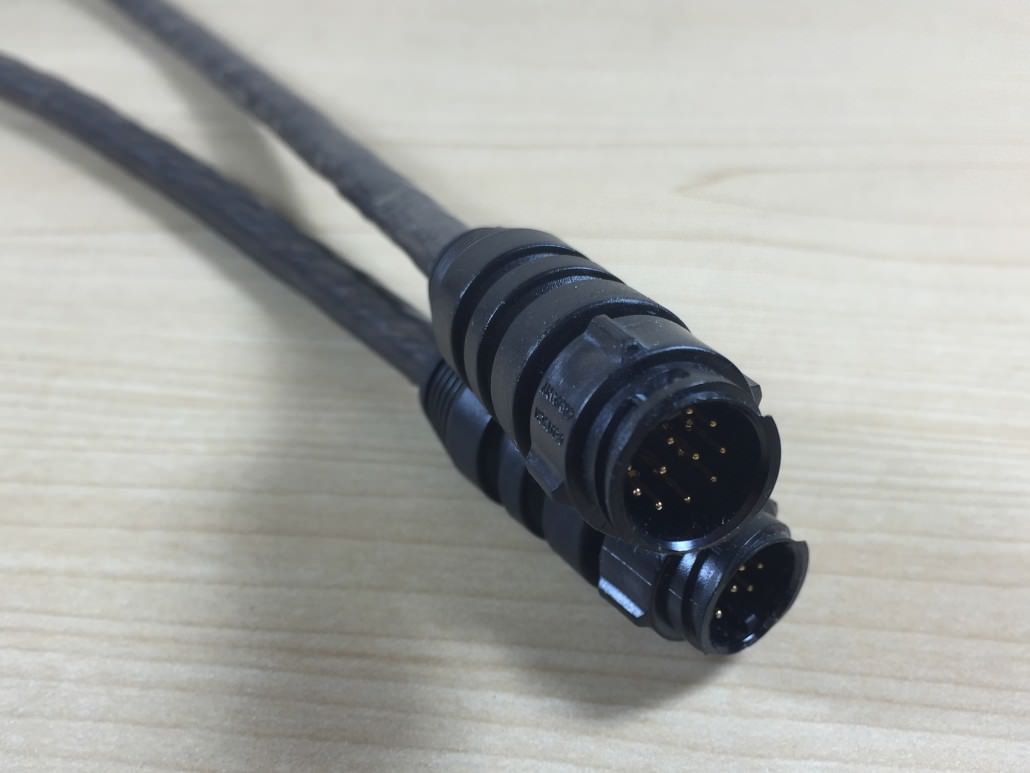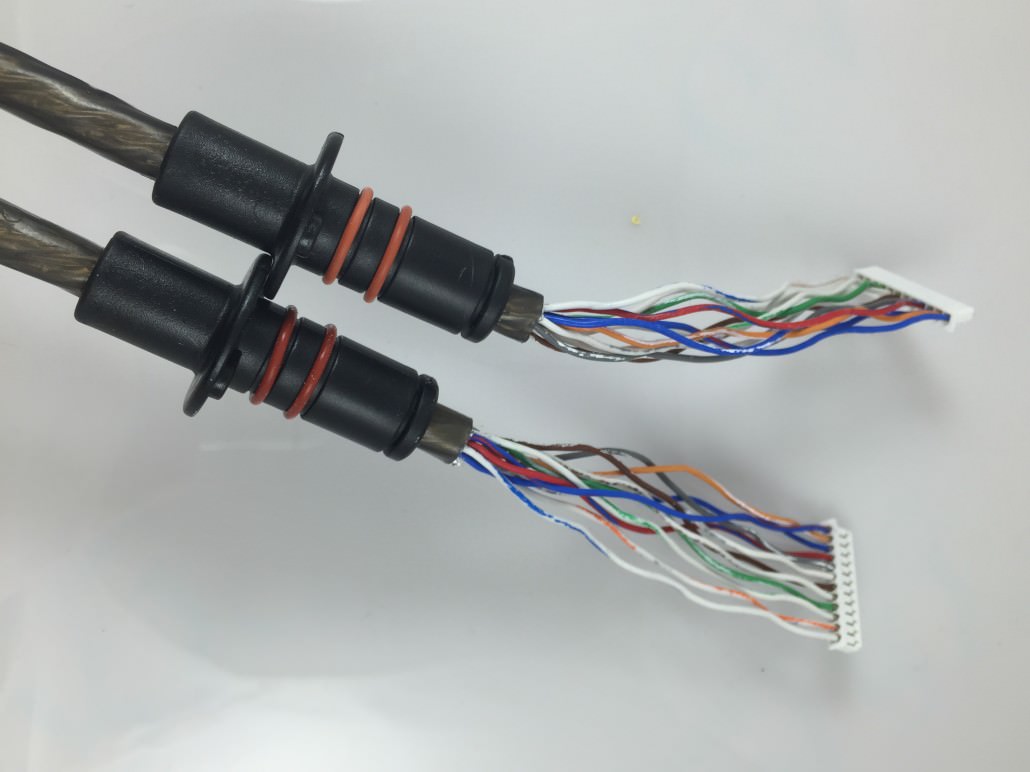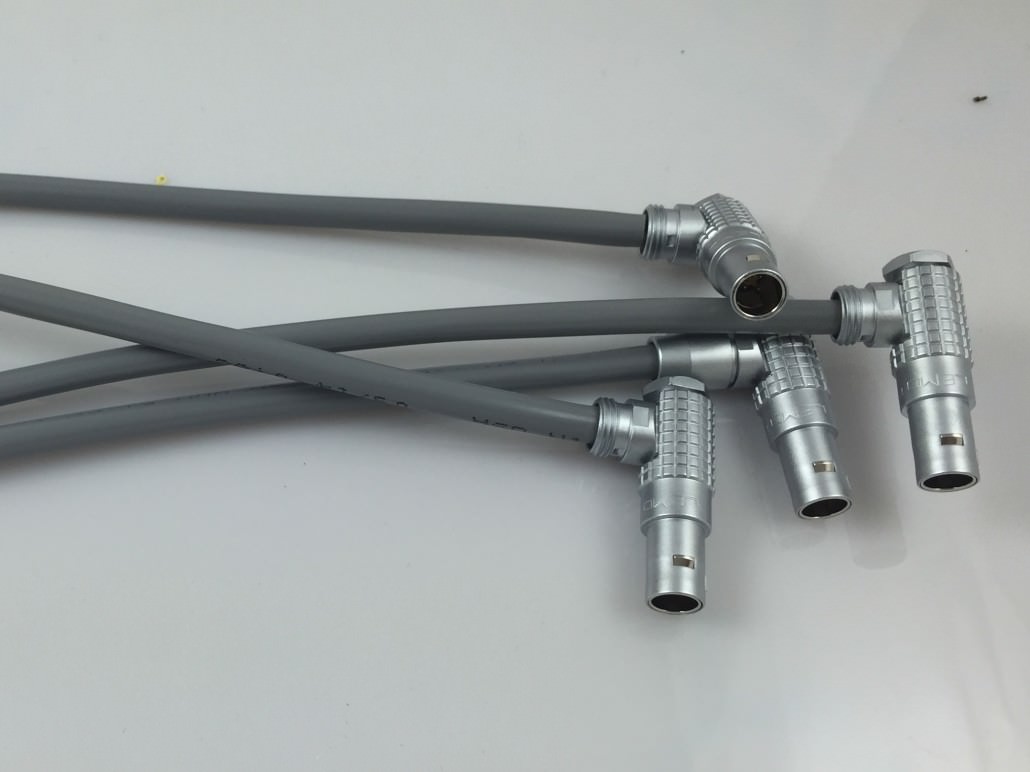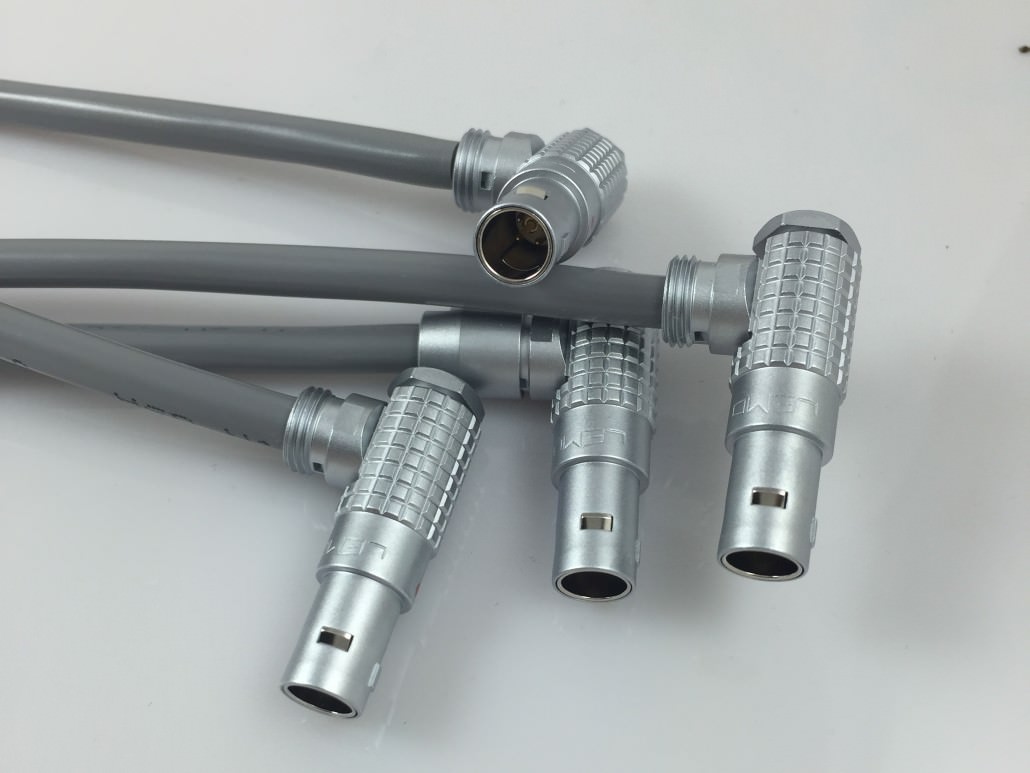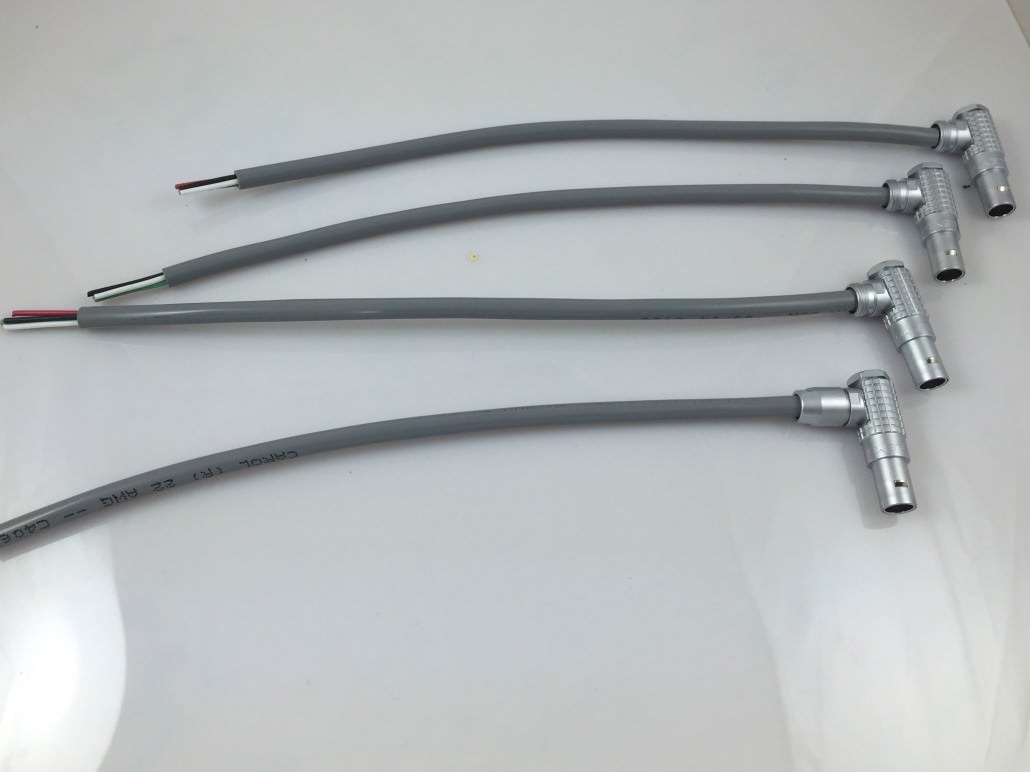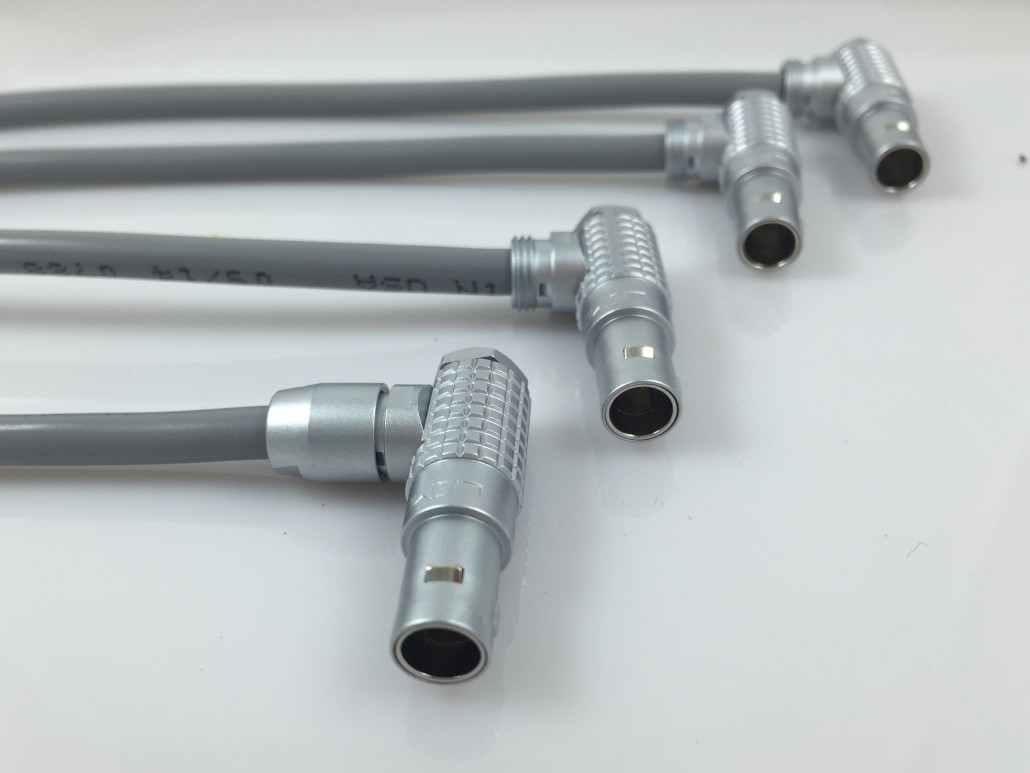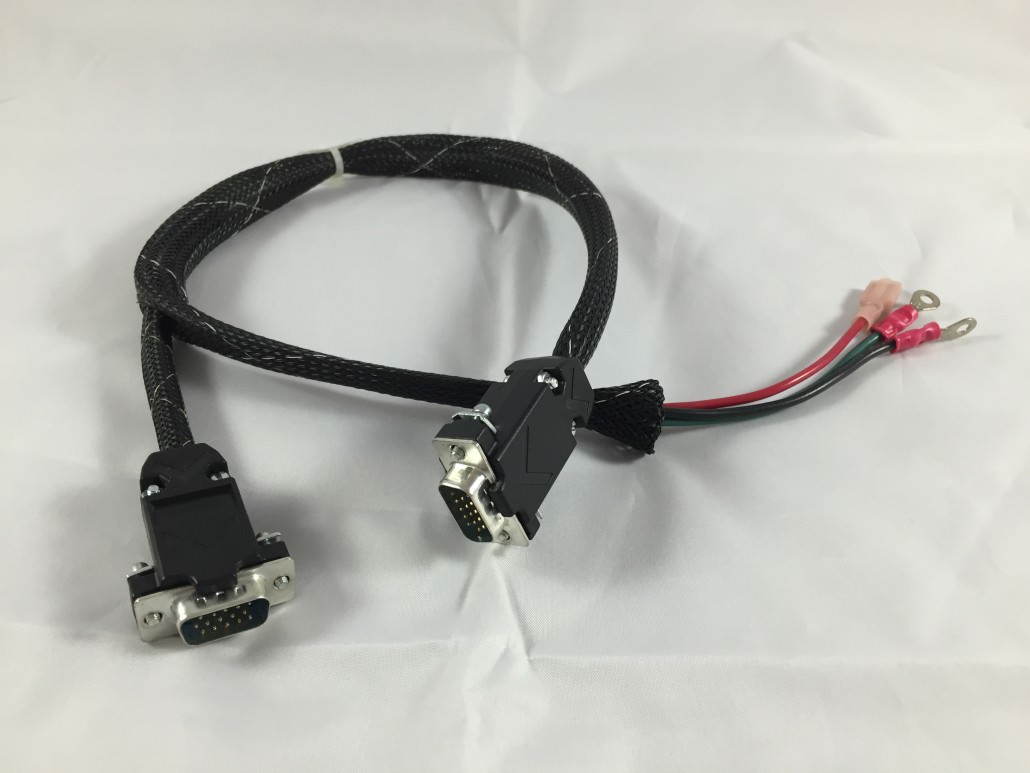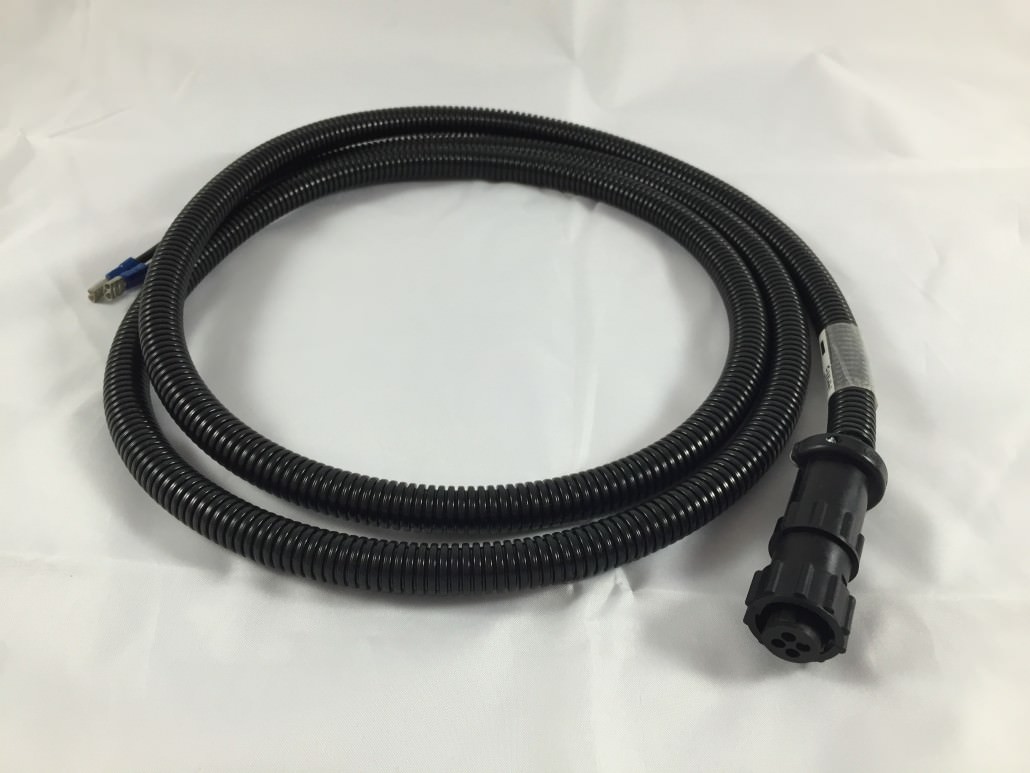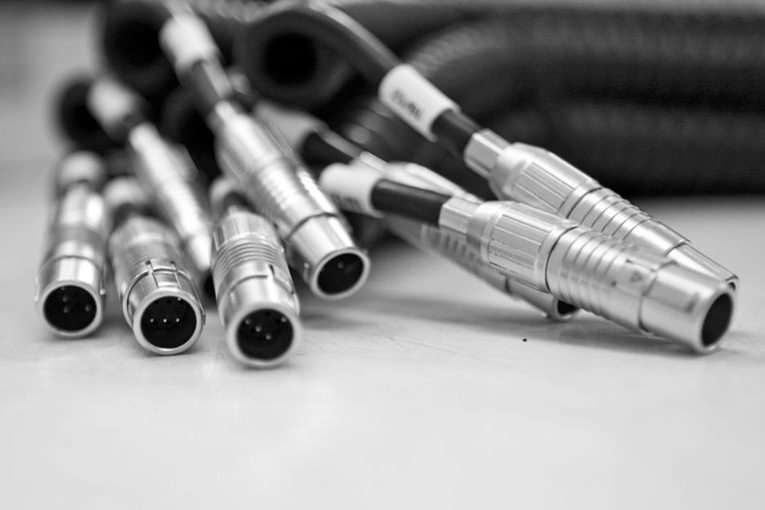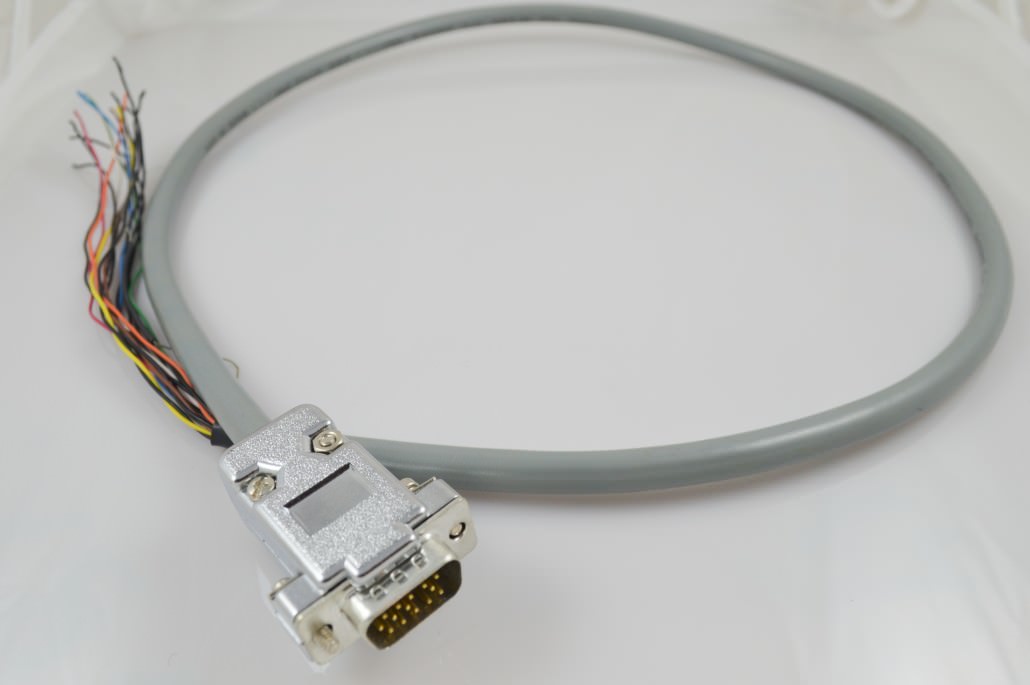The Overmolding Process
Thermoplastic and thermosets tend to be the most popular materials used in overmolding, the process consists of placing the cable assembly into a mold template, then heated materials of choice is injected into the mold template in a resin form along side coolants, the resin hardens into the end-result mold once the resin cools down from its heated state.
Common Materials used for Overmolding Cables
- Thermoplastic
- Thermosets
- Aluminum
- Steel
- Zinc
- Rubber
Overmolded Cable Design
The design process of the mold must factor in practicality and aesthetics. The material type used is determined by technical conditions such as durability in varying weather conditions as well as production cost.
The aesthetics often include branding, such as a company logo incorporated into the mold, as well as part information and certification.
In some instances color co-ordination needs to be taken into account, the use of color coding molds allows handlers of the cable assemblies to take away important information about the assemblies’ configuration and purpose based on the color of its molding.
Many overmolding tasks have their own unique requirements.
Why Overmold your Wires and Assemblies?
Shielding is an important part of a quality product that ensures required durability, just as wires are shielded for electrical signal interference known as crosstalk, overmolded cable assemblies should be shielded from environmental contaminants like liquids and grease.
Overmolding also provides more rugged flexibility, allowing for rougher handling.
